10 Common Myths About Artificial Intelligence You Should Stop Believing
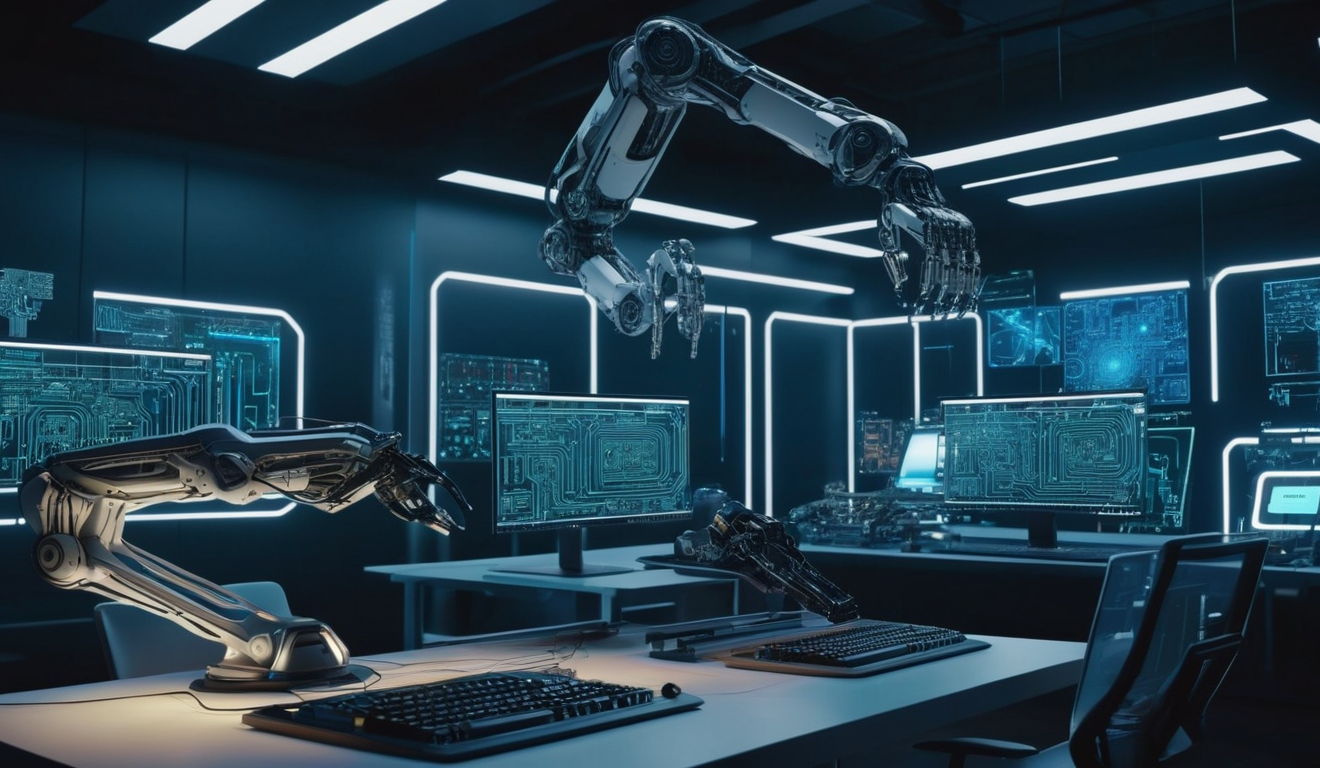
In today’s fast-paced digital world, artificial intelligence (AI) is often at the forefront of discussions about technology, jobs, and the future. However, with its rise in popularity comes a slew of misconceptions that can cloud our understanding of what AI truly is and what it can do. In this article, we’re going to debunk some of the most common myths about AI, clarifying its capabilities, limitations, and the transformative potential it holds for various industries. Understanding these myths is crucial for informed discussions and decisions regarding AI, helping us navigate the intricate landscape of this powerful technology.
Many people believe that AI possesses human-like reasoning and consciousness. This misconception is as widespread as it is misleading. In reality, AI operates through complex algorithms and data patterns, lacking true understanding or emotions. Imagine trying to explain your feelings to a computer; it simply can’t relate in the way a human can. This fundamental limitation means that while AI can analyze data and make predictions, it does not “think” or “feel” like we do, which can lead to significant misinterpretations in decision-making.
The fear that AI will completely replace human jobs is an exaggerated narrative fueled by sensational headlines. While it’s true that AI can automate certain tasks, it also creates new job opportunities and enhances existing roles. Think of AI as a tool that helps workers become more efficient rather than a competitor. This collaboration between humans and machines can lead to more fulfilling work.
AI is more likely to transform job roles rather than eliminate them entirely. Workers will need to adapt and learn new skills to work alongside AI technologies effectively. For example, a factory worker might shift from manual labor to overseeing automated systems, requiring a different skill set but not necessarily leading to job loss.
As AI evolves, new industries and job sectors will emerge, focusing on AI development, maintenance, and ethical oversight. This will ensure a balance between technology and human employment. The future job market will likely include roles such as AI ethicists and data curators, which didn’t exist a decade ago.
Many people assume that AI systems are always accurate and reliable, but this is far from the truth. AI can make mistakes, especially when trained on biased or incomplete data. For instance, if an AI system is fed flawed data, it can lead to significant errors in outcomes, much like a chef who uses spoiled ingredients to cook a meal.
The performance of AI systems heavily relies on the quality of data used for training. Poor data can lead to significant errors and unintended consequences in AI applications. Thus, ensuring high-quality data is crucial for effective AI performance.
AI systems require ongoing updates and training to improve their accuracy and performance. They are not static solutions; they must evolve with changing data and environments, similar to how a student must continually learn and adapt to new knowledge.
A common misconception is that AI can grasp context in the same way humans do. In reality, AI lacks the ability to understand nuances and cultural references, often leading to misinterpretations. For example, an AI might struggle to understand a joke or sarcasm, which can lead to awkward interactions.
While advancements in natural language processing have been made, AI still struggles with sarcasm, idioms, and other context-dependent language aspects. This limitation can hinder its effectiveness in communication, making human oversight essential.
Human oversight remains essential in ensuring AI applications consider context and make informed decisions, especially in sensitive areas like healthcare and legal systems. It’s a partnership where human intuition complements AI’s analytical capabilities.
The belief that AI will rapidly evolve into superintelligence is largely speculative. Current AI technologies are far from achieving the level of general intelligence exhibited by humans. Experts disagree on the timeline for achieving superintelligent AI, with many suggesting it could take decades or even centuries, if it is possible at all.
Experts disagree on the timeline for achieving superintelligent AI, with many suggesting it could take decades or even centuries, if it is possible at all. Current AI excels in narrow tasks, such as image recognition and data analysis, but lacks the general cognitive abilities required for true intelligence comparable to humans.
Today’s AI excels in narrow tasks, such as image recognition and data analysis, but lacks the general cognitive abilities required for true intelligence comparable to humans. It’s important to understand that AI, as it stands, is a powerful tool but not a replacement for human intellect.
| Myth | Reality |
|---|---|
| AI Can Think Like Humans | AI operates through algorithms and data patterns, lacking true understanding. |
| AI Will Replace All Jobs | AI will transform jobs, creating new opportunities for collaboration. |
| AI Is Infallible | AI can make mistakes, especially with biased or incomplete data. |
| AI Understands Context | AI lacks the ability to grasp nuances and cultural references. |
| AI Will Achieve Superintelligence Soon | Current AI is far from achieving superintelligence. |
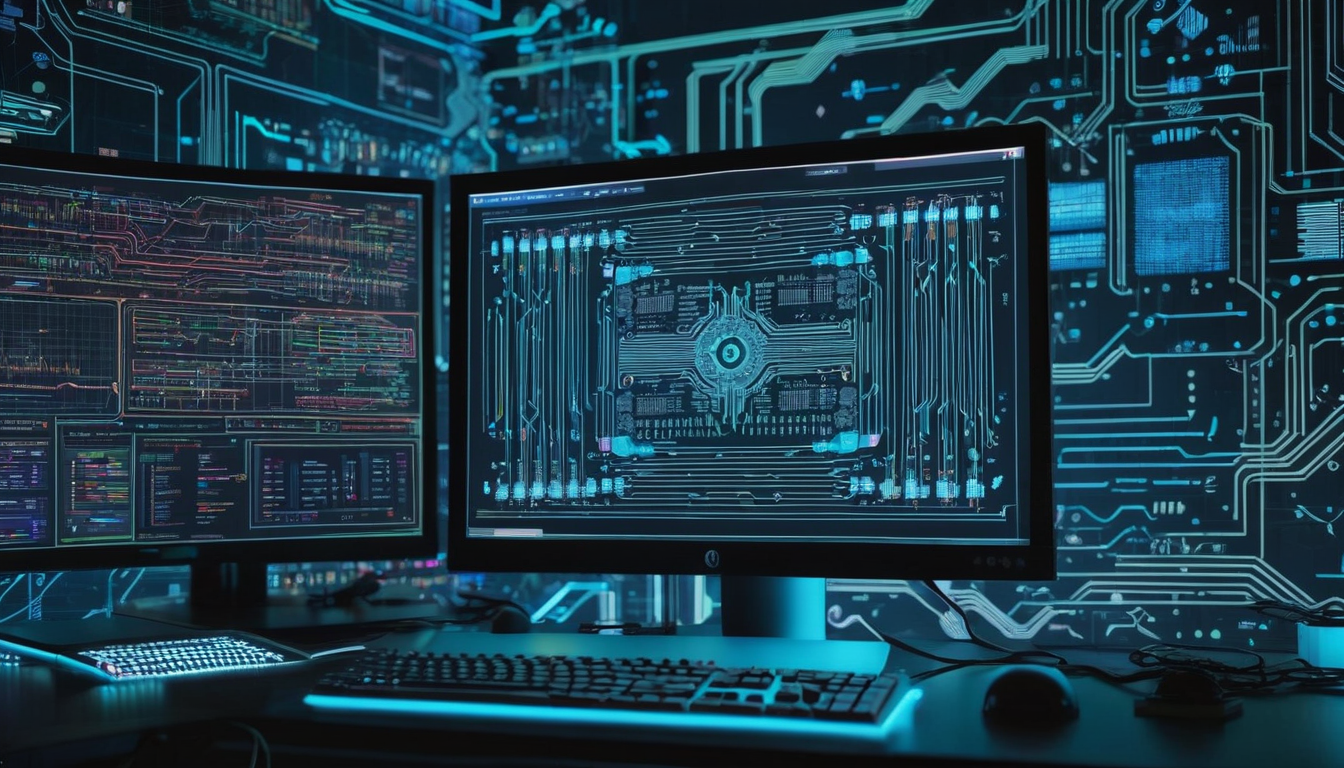
Myth 1: AI Can Think Like Humans
Many people are under the impression that AI can think like humans, but this couldn’t be further from the truth. While artificial intelligence can process information and perform tasks that mimic human behavior, it fundamentally operates on algorithms and vast data patterns. Unlike humans, AI lacks true understanding or emotions, which are crucial for nuanced decision-making. Think of AI as a highly advanced calculator; it can crunch numbers and analyze data but doesn’t have the ability to feel or comprehend the world in a human way.
To illustrate this point, consider the following table that outlines the key differences between human thought processes and AI functionalities:
| Aspect | Humans | AI |
|---|---|---|
| Understanding | Comprehends context and emotions | Processes data without true comprehension |
| Decision Making | Informed by experiences and feelings | Based on algorithms and data patterns |
| Learning | Adapts through experiences | Requires retraining with new data |
The limitations of AI become even clearer when we consider its inability to grasp complex human emotions and social cues. For instance, when an AI system analyzes a conversation, it can identify keywords and respond accordingly, but it might miss out on sarcasm or emotional undertones. This can lead to misunderstandings that a human would easily navigate. Here’s a quick list of examples where AI might falter:
- Misinterpreting a joke or sarcasm
- Failing to recognize emotional cues in a conversation
- Struggling with cultural references that require context
In summary, while AI can perform tasks that seem intelligent, it lacks the depth of understanding and emotional intelligence that humans possess. So, the next time you hear someone say that AI can think like humans, remind them that we are still far from that reality. As we continue to develop AI technologies, it’s crucial to recognize these limitations to foster informed discussions about its capabilities and potential impact on society.
“AI is a tool, not a replacement for human thought.”
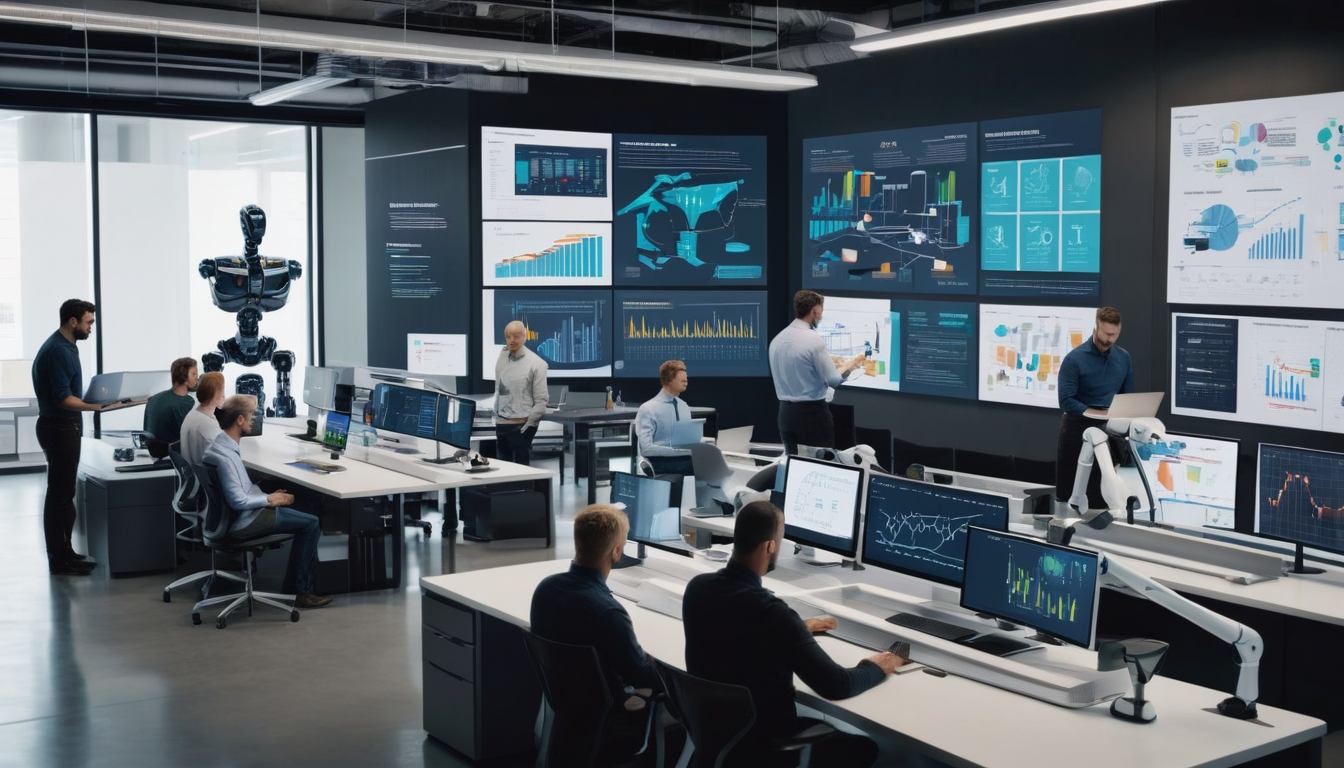
Myth 2: AI Will Replace All Jobs
There’s a common fear that AI will replace all jobs, but this notion is not only exaggerated but also overlooks the reality of how technology and employment evolve together. While it’s true that AI can automate certain tasks, it’s essential to recognize that it also creates new job opportunities and enhances existing roles. Think of AI as a tool that can assist us rather than a competitor that will take our jobs away. Just like calculators didn’t eliminate the need for mathematicians, AI won’t erase the need for human workers.
Many industries are already experiencing a transformation thanks to AI, leading to a more collaborative environment where humans and machines work side by side. This collaboration emphasizes the need for workers to adapt and learn new skills to effectively leverage AI technologies. Here are some key points to consider:
| Aspect | Impact on Jobs |
|---|---|
| Automation of Routine Tasks | Reduces time spent on repetitive tasks, allowing workers to focus on more complex activities. |
| Creation of New Roles | Emergence of jobs in AI development, maintenance, and oversight. |
| Skill Enhancement | Workers will need to upskill to work effectively with AI technologies. |
Moreover, as AI continues to evolve, new industries and job sectors will emerge, focusing on areas such as:
- AI Development
- Data Analysis
- Ethical Oversight
- AI Maintenance and Support
In this context, it’s crucial to understand that the landscape of employment is changing, but it doesn’t mean that jobs are disappearing. Instead, we are moving towards a future where humans and AI work together to achieve greater productivity and innovation. As Bill Gates once said, “The advance of technology is based on making it fit in so that you don’t even even think about it.” This statement emphasizes how technology, including AI, can be seamlessly integrated into our work lives, enhancing our capabilities rather than replacing us.
In conclusion, while the myth that AI will replace all jobs may be popular, the reality is much more nuanced. AI is here to assist us, and by embracing this technology, we can look forward to a future filled with new opportunities and enhanced job roles.
Subheading 2.1: Job Transformation, Not Elimination
When we talk about AI and job transformation, it’s essential to understand that the landscape of work is changing, not disappearing. Instead of viewing AI as a job thief, we should see it as a tool that enhances our capabilities. Think of AI as a co-pilot in your work journey—it’s there to assist you, not to take the controls completely.
While some roles may be automated, many others will evolve. For instance, consider the manufacturing sector. AI can take over repetitive tasks, allowing workers to focus on more complex and creative aspects of production. This shift leads to the emergence of new job titles and responsibilities that never existed before. In fact, a recent study showed that over 60% of jobs will change significantly due to AI advancements.
| Old Job Roles | Transformed Job Roles |
|---|---|
| Data Entry Clerk | Data Analyst |
| Assembly Line Worker | Quality Control Specialist |
| Customer Service Representative | Customer Experience Manager |
Moreover, as we embrace AI, we will see a surge in demand for new skills. Workers will need to adapt and learn how to work alongside AI technologies effectively. This means that educational institutions and companies must prioritize upskilling and reskilling initiatives. The future of work isn’t about elimination; it’s about transformation and growth.
In summary, the narrative around AI should shift from fear of job loss to excitement about job evolution. As we navigate this transformation, we must remember that human creativity and emotional intelligence are irreplaceable. AI can handle data and analytics, but the human touch will always be essential in areas like leadership, empathy, and complex problem-solving.
So, the next time you hear someone say that AI will eliminate jobs, remind them that it’s not about job elimination, but rather about job transformation. Embracing this change can lead to a more innovative and fulfilling work environment for everyone.
Subheading 2.2: Emerging Job Sectors
As artificial intelligence continues to advance, it is not just about automation and efficiency; it also opens doors to a variety of new job sectors that didn’t exist before. The landscape of employment is shifting, and with it comes a wave of opportunities that are exciting and ripe for exploration. For instance, roles in AI development, maintenance, and ethical oversight are becoming increasingly crucial. These sectors not only promise job security but also the chance to be at the forefront of technology.
To give you a clearer picture, here’s a table showcasing some of the emerging job sectors influenced by AI:
| Job Sector | Description | Potential Roles |
|---|---|---|
| AI Development | Creating and improving AI algorithms and systems. | AI Engineer, Data Scientist, Machine Learning Specialist |
| AI Maintenance | Ensuring AI systems function correctly and efficiently. | AI Technician, System Administrator, Support Specialist |
| AI Ethics | Overseeing the ethical implications of AI technology. | Ethics Officer, Compliance Analyst, Policy Advisor |
Moreover, the integration of AI into various industries is creating a demand for professionals who can bridge the gap between technology and human interaction. This includes roles such as AI trainers, who help teach AI systems to understand human nuances, and AI auditors, who ensure that AI systems are operating without bias. The future of work is not just about machines taking over; it’s about humans and machines working together in harmony.
In summary, while the fear of job loss due to AI is prevalent, the reality is that new sectors are emerging, fostering a collaborative environment where human skills and AI capabilities can coexist. As we navigate this evolving landscape, it’s essential to embrace lifelong learning and adaptability to seize these opportunities. So, are you ready to dive into the future of work?
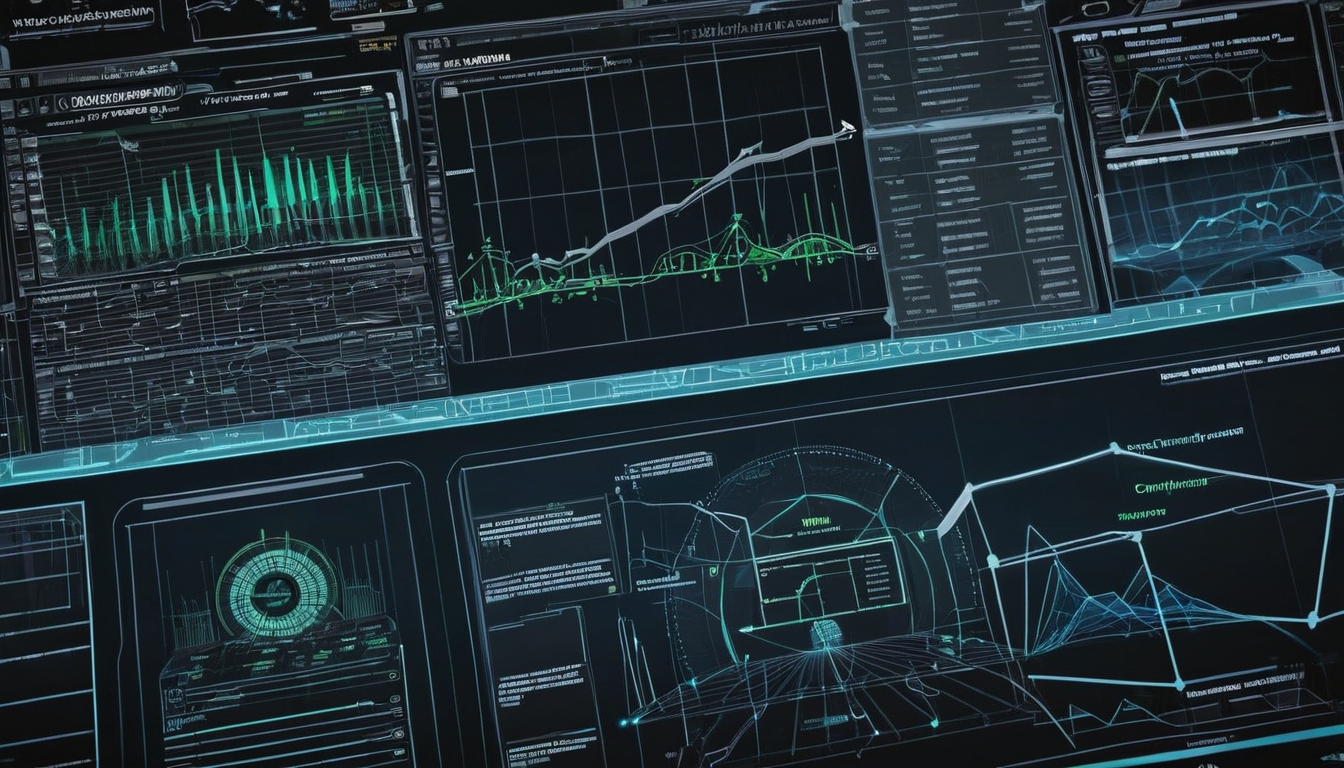
Myth 3: AI Is Infallible
Many people assume that AI systems are always accurate and reliable, leading to the myth that they are infallible. However, this perception couldn’t be further from the truth. AI can and does make mistakes, particularly when it is trained on biased or incomplete data. These errors can result in significant issues, especially in critical applications like healthcare or finance. Just like humans, AI is prone to errors, and understanding this is vital for anyone interacting with or relying on AI technologies.
To illustrate this point, consider the following table that highlights some common areas where AI can falter:
| Area | Example of Error | Potential Consequences |
|---|---|---|
| Image Recognition | Misidentifying an object | Incorrect decisions in security systems |
| Natural Language Processing | Misunderstanding context | Inaccurate translations or responses |
| Predictive Analytics | Faulty predictions based on biased data | Financial losses or misguided strategies |
Furthermore, the performance of AI systems heavily relies on the quality of data used for training. Poor data can lead to significant errors and unintended consequences in AI applications. For instance, if an AI system is trained on biased data, it may perpetuate those biases in its decision-making processes, leading to unfair outcomes. This is why data quality is paramount; without it, AI systems can become unreliable.
Additionally, AI systems require ongoing updates and training to improve their accuracy and performance. They are not static solutions; instead, they must evolve with changing data and environments. Just like a car needs regular maintenance to run smoothly, AI systems need continuous learning to stay relevant and effective. This ongoing process is crucial for ensuring that AI can adapt to new challenges and reduce the likelihood of errors over time.
In summary, while AI has the potential to revolutionize many industries, it is essential to recognize that AI is not infallible. Understanding its limitations and the importance of data quality and continuous improvement can help us use this technology more effectively. As we move forward in the age of AI, let’s keep this in mind: just like any other tool, it requires careful handling and oversight.
“AI may not be infallible, but with proper guidance and quality data, it can be a powerful ally.”
Subheading 3.1: The Importance of Data Quality
When it comes to artificial intelligence, the phrase “garbage in, garbage out” couldn’t be more accurate. The effectiveness of AI systems is heavily reliant on the quality of the data used for training. If the data is biased, incomplete, or inaccurate, the AI’s output will reflect those flaws. This can lead to significant errors and unintended consequences, which can be detrimental in real-world applications.
Imagine you’re trying to bake a cake, but you use expired ingredients. No matter how skilled you are as a baker, the end result will likely be a disaster. Similarly, AI systems require high-quality data to function optimally. Here are some key factors that illustrate why data quality is paramount:
- Accuracy: Data must be correct and precise to ensure AI makes reliable predictions.
- Completeness: Data should cover all necessary aspects of the problem domain to avoid gaps in understanding.
- Relevance: The data used should be pertinent to the specific tasks the AI is designed to perform.
- Timeliness: Outdated data can lead to decisions based on irrelevant information, compromising the AI’s effectiveness.
To further emphasize the significance of data quality, consider the following table that outlines the potential impacts of poor data quality on AI systems:
| Data Quality Issue | Potential Impact |
|---|---|
| Inaccurate Data | Leads to incorrect predictions and decisions. |
| Incomplete Data | Results in gaps in knowledge, affecting performance. |
| Biased Data | Can perpetuate stereotypes and discrimination in AI outcomes. |
| Outdated Data | May cause AI systems to operate on irrelevant information. |
In conclusion, ensuring high-quality data is not just a technical requirement; it’s a fundamental necessity for the successful deployment of AI technologies. As we move forward, the emphasis on data quality will only grow stronger, shaping the future of AI applications in various industries.
“The quality of the data is the foundation upon which AI builds its intelligence.” – AI Expert
Subheading 3.2: Continuous Learning and Improvement
One of the most fascinating aspects of artificial intelligence is its ability to undergo continuous learning and improvement. Unlike a traditional program that remains static once deployed, AI systems are designed to evolve over time. This evolution is crucial for enhancing their accuracy and performance in real-world applications. Just like a student who learns from experience, AI algorithms benefit from exposure to new data and scenarios.
Continuous learning involves several key processes:
- Data Ingestion: AI systems constantly gather new data from various sources, which helps them adapt to changing environments.
- Model Training: As new data is fed into the system, AI models undergo retraining to refine their algorithms and improve decision-making.
- Feedback Loops: Implementing a feedback mechanism allows AI to learn from its mistakes, making it more reliable and effective over time.
To illustrate how continuous learning works, consider the following table that highlights the different stages of AI improvement:
| Stage | Description | Outcome |
|---|---|---|
| Data Collection | Gathering diverse datasets from multiple sources. | Enhanced understanding of various scenarios. |
| Model Training | Using collected data to retrain AI algorithms. | Improved accuracy in predictions and decisions. |
| Evaluation | Assessing the performance of AI models against benchmarks. | Identification of areas for further improvement. |
This iterative process ensures that AI systems are not just one-time solutions; instead, they become more adept at handling complex tasks as they learn. As AI technology progresses, we can expect even more sophisticated methods for continuous learning, making these systems increasingly valuable in various sectors.
In conclusion, the journey of continuous learning and improvement is vital for the future of AI. It empowers these systems to adapt, grow, and serve us better, ultimately leading to more effective applications across industries. So, the next time you hear someone say that AI is a finished product, remind them that the real magic lies in its ability to learn and improve continuously!
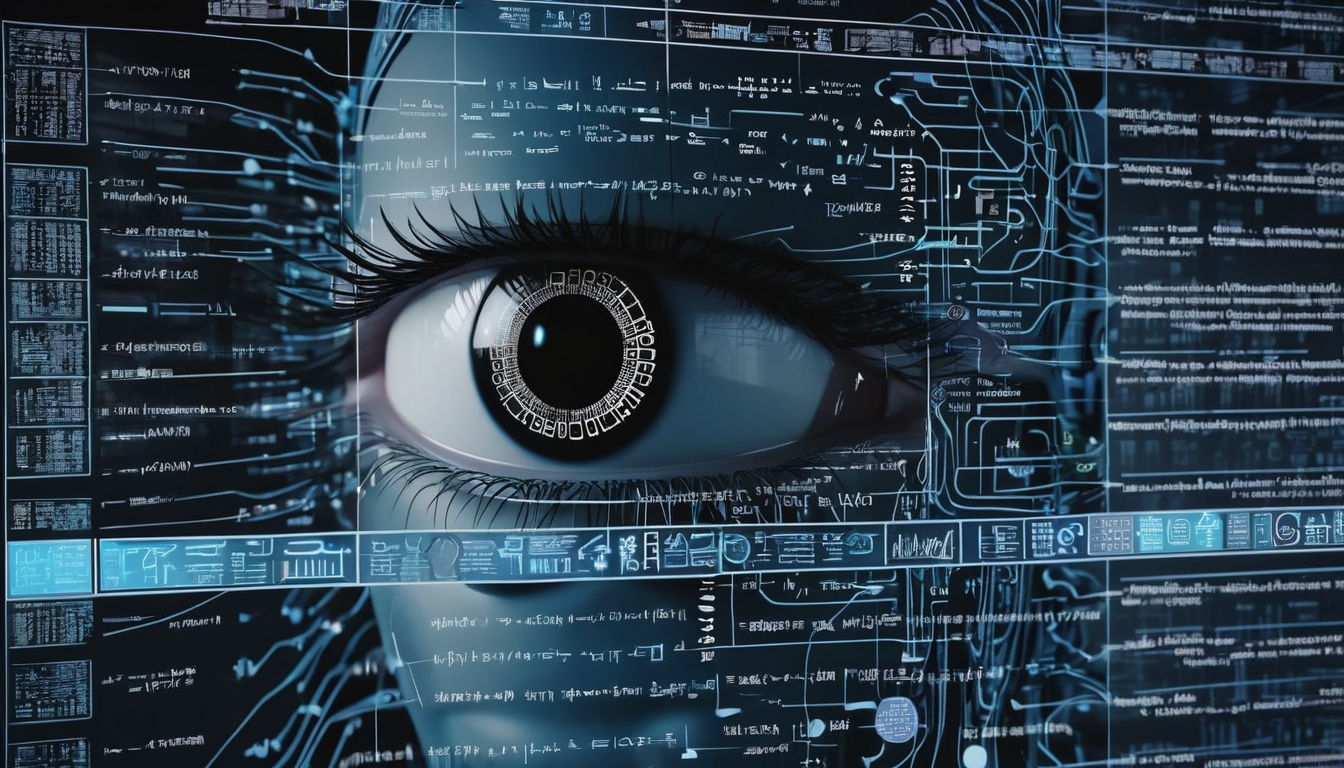
Myth 4: AI Understands Context
One of the most persistent myths about artificial intelligence is that it can understand context just like humans do. This misconception often leads people to believe that AI can interpret language, emotions, and cultural nuances effortlessly. However, the reality is quite different. AI operates based on algorithms and data patterns, lacking the innate understanding that humans possess. This limitation can result in significant misinterpretations, especially when dealing with complex or nuanced information.
For instance, while AI can process vast amounts of text and analyze sentiment, it often struggles with subtleties such as:
- Sarcasm: AI may take sarcastic comments literally, leading to unintended conclusions.
- Idioms: Phrases like “kick the bucket” can confuse AI, as it doesn’t grasp the figurative meaning.
- Cultural References: Without contextual knowledge, AI may fail to recognize important cultural cues that shape communication.
To illustrate this point further, let’s take a look at a simple table comparing human understanding to AI capabilities:
| Aspect | Human Understanding | AI Capability |
|---|---|---|
| Contextual Awareness | High – understands nuance and subtext | Low – relies on explicit data |
| Emotional Intelligence | High – can empathize and interpret feelings | Low – lacks true emotional understanding |
| Adaptability | High – adjusts based on social cues | Moderate – needs retraining for new contexts |
As you can see, the differences between human and AI understanding are stark. This limitation underscores the importance of human oversight in AI applications. In sensitive fields like healthcare or legal systems, where context is critical, having a human in the loop can make all the difference. Human experts can interpret the subtleties that AI simply cannot grasp, ensuring that decisions are made with the necessary depth of understanding.
In summary, while AI has made incredible strides in processing and analyzing information, it is crucial to remember that it does not truly understand context. The myth that AI can comprehend nuances like a human is not only misleading but can also lead to serious errors in judgment. As we continue to integrate AI into various aspects of our lives, we must remain vigilant and ensure that human insight is always part of the equation.
In the words of AI expert Dr. Kate Crawford, “AI is not a replacement for human judgment; it is a tool that requires human wisdom.” This quote perfectly encapsulates the need for human involvement in AI decision-making processes.
Subheading 4.1: Limitations in Natural Language Processing
Natural Language Processing (NLP) is a fascinating field of artificial intelligence that focuses on the interaction between computers and human language. However, despite its advancements, NLP has notable limitations that often lead to misunderstandings and miscommunications. One of the primary challenges is the inability of AI systems to grasp the nuances of human language. For instance, sarcasm, idioms, and cultural references can easily trip up even the most sophisticated algorithms.
Imagine trying to explain a joke to a child who has never heard it before; they might take your words literally, missing the humor entirely. Similarly, AI systems often lack the context necessary to interpret language as humans do. This can result in responses that are not only incorrect but also potentially misleading.
Here are some key limitations that highlight the challenges faced by NLP:
- Sarcasm Recognition: AI struggles to identify sarcasm, which can lead to serious misinterpretations. For example, if someone says, “Oh great, another rainy day,” an AI might take it at face value rather than recognizing the sarcasm.
- Idiomatic Expressions: Phrases like “kick the bucket” can confuse AI, as they require an understanding of cultural context that machines simply do not possess.
- Ambiguity: Words with multiple meanings can pose a significant challenge. The word “bark,” for instance, could refer to a tree’s outer layer or the sound a dog makes, depending on the context.
Moreover, the quality of training data plays a crucial role in the effectiveness of NLP systems. If the data used is biased or lacks diversity, the AI’s understanding of language will be limited, leading to skewed interpretations. This highlights the importance of having a well-rounded dataset that encompasses various dialects, cultures, and contexts.
In conclusion, while NLP has made significant strides, it is essential to recognize its limitations. Understanding these constraints can help users better navigate interactions with AI systems and foster a more realistic view of what these technologies can achieve. As we continue to develop AI, human oversight will remain crucial in ensuring that these systems are used effectively and responsibly.
| Limitation | Description |
|---|---|
| Sarcasm Recognition | AI often fails to identify sarcasm, leading to misinterpretations. |
| Idiomatic Expressions | Phrases that don’t translate literally can confuse AI. |
| Ambiguity | Words with multiple meanings can lead to incorrect conclusions. |
By acknowledging these limitations, we can better appreciate the complexity of human language and the ongoing efforts to improve AI’s understanding of it.
Subheading 4.2: The Role of Human Oversight
As we delve deeper into the complexities of artificial intelligence, it’s crucial to recognize the indispensable role of human oversight. While AI systems can process vast amounts of data and execute tasks with impressive speed, they still lack the human touch necessary for nuanced understanding. AI, despite its advancements, is not infallible; it can misinterpret data or make decisions that lack contextual awareness. This is where human intervention becomes essential.
To illustrate this point, consider the following scenarios where human oversight is vital:
- Healthcare: AI can analyze patient data to suggest diagnoses, but only a trained physician can interpret those results in the context of a patient’s history and symptoms.
- Legal Systems: AI can assist in legal research, but only human lawyers can apply the law’s nuances to real-world situations.
- Customer Service: AI chatbots can handle basic inquiries, but complex issues may require a human touch to resolve effectively.
Furthermore, the significance of human oversight extends beyond just correcting errors. It involves ensuring that AI systems operate within ethical boundaries and respect privacy. For instance, when developing AI technologies, there must be a framework for ethical guidelines to prevent biases and discrimination in decision-making processes. Human oversight acts as a safeguard, ensuring that AI applications align with societal values and norms.
| Aspect | AI Capability | Human Oversight |
|---|---|---|
| Decision Making | Data-driven analysis | Contextual understanding and ethical considerations |
| Error Correction | Automated error detection | Critical thinking and problem-solving |
| Interaction | Basic customer queries | Complex issue resolution |
In conclusion, while AI continues to evolve and play a significant role in various sectors, the importance of human oversight cannot be overstated. It ensures that AI systems function effectively while adhering to ethical standards and delivering outcomes that are beneficial to society. As we move forward, fostering a collaborative environment between AI technologies and human intelligence will be key to harnessing the full potential of artificial intelligence.

Myth 5: AI Will Achieve Superintelligence Soon
The belief that AI will achieve superintelligence soon is one of the most pervasive myths surrounding artificial intelligence. Many people envision a future where machines surpass human intelligence in a matter of years, but the reality is far more complex. Current AI technologies are designed to perform specific tasks and excel in narrow domains, such as image recognition and data analysis, rather than possessing the general intelligence that humans exhibit.
Experts in the field of AI have differing opinions on when, or if, we will see superintelligent AI. Some are optimistic, while others are much more skeptical. The timeline for achieving such a breakthrough is still a hot topic of debate. Here’s a quick overview:
| Expert Opinion | Estimated Timeline |
|---|---|
| Optimistic Researchers | 10-20 years |
| Moderate Analysts | 50-100 years |
| Pessimistic Scholars | Never |
As you can see, the estimates vary widely. This variance reflects the uncertainty and complexity involved in developing true superintelligence. To put it in perspective, achieving superintelligence is akin to trying to build a bridge across a vast ocean without knowing the exact distance or the best materials to use. It’s a monumental task that requires not only advanced technology but also a deep understanding of cognitive processes.
Moreover, current AI systems lack the essential cognitive abilities needed for true intelligence. They operate based on algorithms and data, without the ability to reason, understand emotions, or possess self-awareness. This is a significant limitation compared to human intelligence, which is influenced by experience, intuition, and a myriad of other factors.
To further illustrate the point, consider the following:
- Current AI can perform tasks like playing chess or diagnosing diseases, but it cannot understand the context behind these actions.
- AI lacks the ability to engage in abstract thinking or creative problem-solving, which are hallmarks of human intelligence.
- Many AI systems require vast amounts of data for training, and their accuracy is heavily dependent on the quality of that data.
In conclusion, while the idea of superintelligent AI is fascinating and often sensationalized in media and pop culture, the reality is that we are still far from achieving this goal. The journey toward advanced AI will be gradual, and it is essential to maintain realistic expectations. As we continue to explore the capabilities and limitations of AI, understanding these nuances will help us make informed decisions about its development and integration into our lives.
Subheading 5.1: Timeline for AI Advancement
The timeline for achieving superintelligent AI is a topic of much debate among experts in the field. While some enthusiasts envision a future where machines surpass human intelligence in just a few years, the reality is much more complex. Current AI technologies are still far from achieving the level of general intelligence that humans possess. In fact, many researchers believe that it could take decades, or even centuries, before we see any form of superintelligent AI, if it is achievable at all.
To better understand this timeline, it’s essential to consider the various stages of AI development. Here’s a brief overview:
| Stage | Description | Estimated Timeline |
|---|---|---|
| Narrow AI | AI systems that excel in specific tasks. | Current |
| General AI | AI with cognitive abilities comparable to humans. | Decades to centuries |
| Superintelligent AI | AI that surpasses human intelligence. | Speculative, possibly centuries |
Moreover, the development of AI is not just a linear progression. It involves numerous challenges that need to be addressed, such as ethical considerations, data privacy, and technical limitations. As we navigate through these challenges, the timeline for AI advancement will likely shift. Here are a few factors that could influence this timeline:
- Research Funding: Increased investment in AI research can accelerate advancements.
- Public Perception: How society views AI can impact its development and implementation.
- Regulatory Measures: Government regulations can either hinder or promote AI progress.
In conclusion, while the dream of superintelligent AI is alluring, it’s crucial to approach it with a realistic mindset. As we continue to explore the potential of AI, we must remain grounded in the understanding that true AI advancement is a marathon, not a sprint. As the renowned AI researcher Stuart Russell once said, “We need to ensure that AI systems are aligned with human values and can be controlled.” This quote encapsulates the essence of our journey toward advanced AI, emphasizing the importance of ethical considerations as we forge ahead.
For a visual representation of this timeline, consider a featured image for a WordPress blog post titled “Timeline for AI Advancement”. The design should match the style of an existing image featuring ‘Who Makes Hart Tools’, incorporating a similar color scheme and layout to maintain consistency.
Subheading 5.2: Current AI Capabilities
When we talk about current AI capabilities, it’s essential to understand that today’s AI isn’t a one-size-fits-all solution. Instead, it excels in specific, narrow tasks rather than possessing the broad, adaptive intelligence we often associate with human cognition. For instance, AI systems can outperform humans in certain areas, such as:
- Image Recognition: AI can analyze and identify images with remarkable accuracy, making it invaluable in fields like healthcare for diagnosing diseases from medical images.
- Data Analysis: AI can sift through vast amounts of data at lightning speed, uncovering patterns and insights that would take humans much longer to detect.
- Natural Language Processing: While still limited, AI has made strides in understanding and generating human language, which is evident in applications like chatbots and virtual assistants.
However, despite these impressive capabilities, it’s vital to recognize the limitations that accompany them. AI systems often struggle with tasks that require:
| Task Type | AI Performance | Human Performance |
|---|---|---|
| Context Understanding | Poor | Excellent |
| Creative Problem Solving | Limited | High |
| Emotional Intelligence | None | High |
As you can see from the table above, while AI can handle specific tasks exceptionally well, it lacks the nuanced understanding and emotional intelligence that humans naturally possess. This disparity highlights the importance of human oversight in AI applications, especially in areas that require empathy and deep contextual understanding.
In summary, although AI has made significant strides in various fields, it is crucial to remember that its capabilities are still limited to narrow tasks. As we continue to develop and refine these technologies, the collaboration between humans and AI will be key to unlocking their full potential.
Frequently Asked Questions
- What is the biggest misconception about AI?
One of the largest misconceptions is that AI can think like humans. In reality, AI operates based on algorithms and data patterns, lacking true understanding or consciousness.
- Will AI really take away all jobs?
Not at all! While AI may automate specific tasks, it also creates new job opportunities and enhances existing roles, fostering collaboration between humans and machines.
- Can AI make mistakes?
Yes, AI can and does make mistakes. Its accuracy heavily depends on the quality of data it is trained on, and biased or incomplete data can lead to flawed outcomes.
- Does AI understand context like humans?
No, AI struggles with understanding nuances and cultural references. It often misinterprets sarcasm and idioms, which can lead to communication issues.
- Is AI going to become superintelligent soon?
The belief that AI will quickly evolve into superintelligence is largely speculative. Current AI technologies are far from achieving human-like general intelligence.
- How long will it take for AI to advance?
Experts have varying opinions on the timeline for achieving superintelligent AI, with many suggesting it could take decades or even centuries, if it’s possible at all.
- What role does human oversight play in AI?
Human oversight is crucial in ensuring that AI applications consider context and make informed decisions, especially in sensitive areas like healthcare and legal systems.













